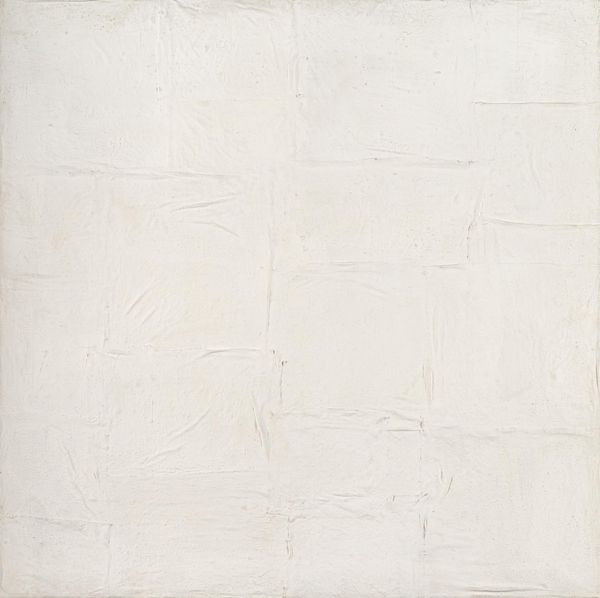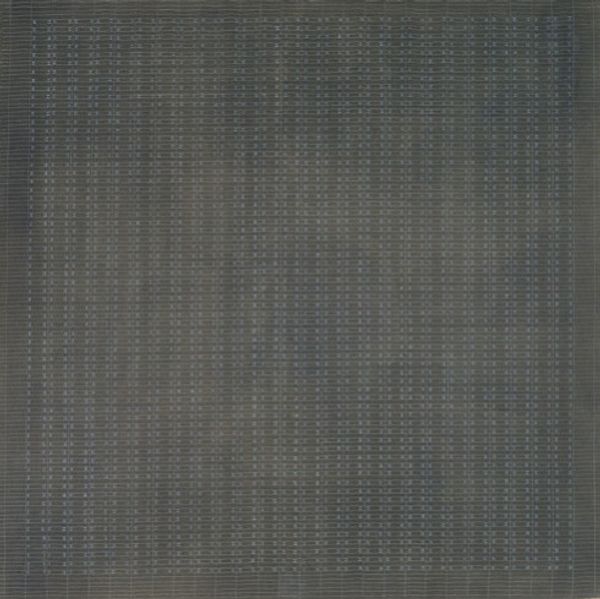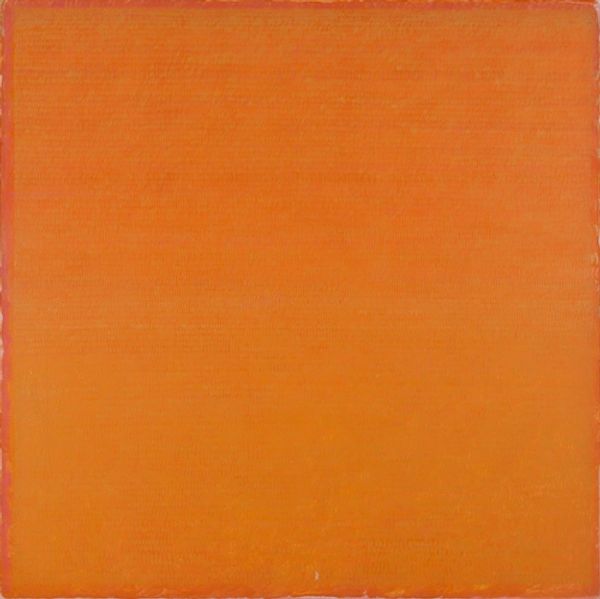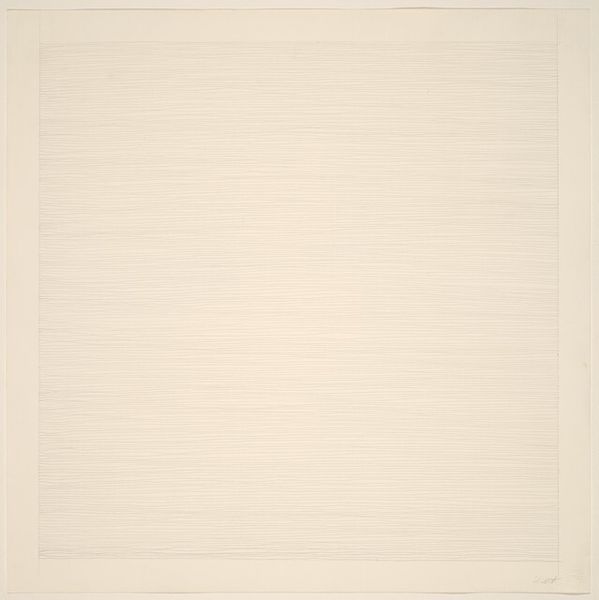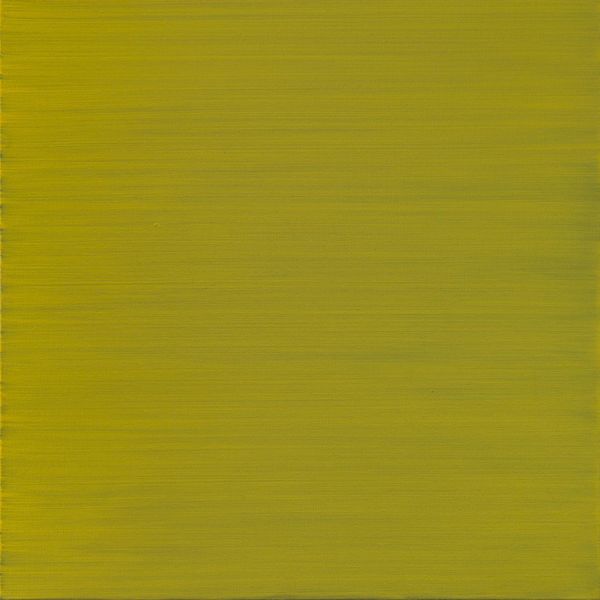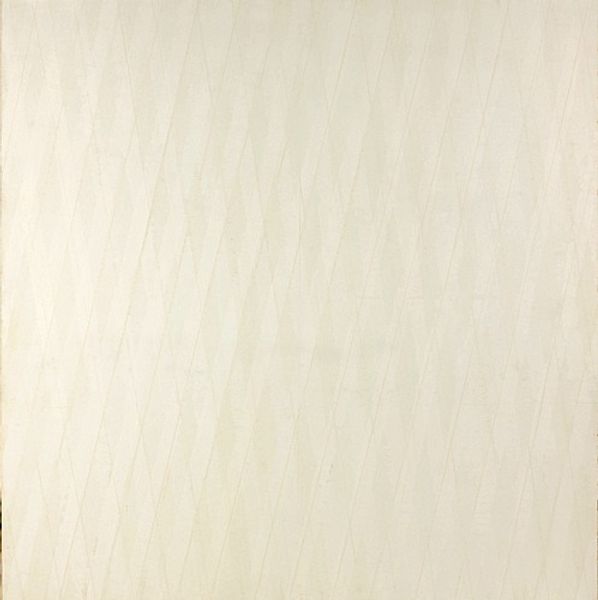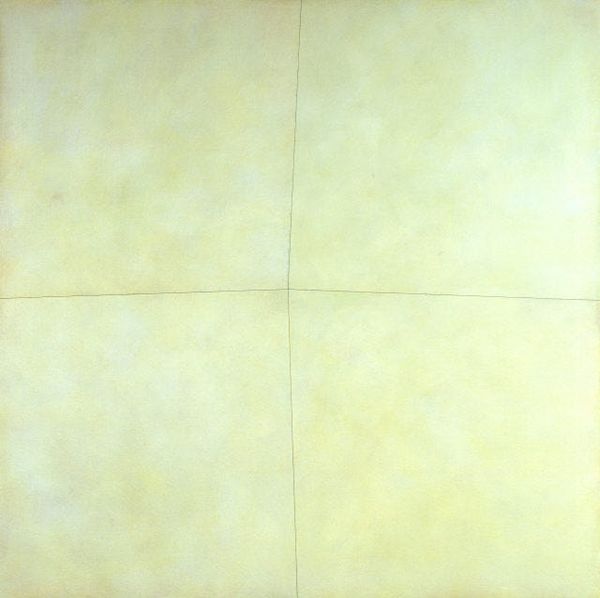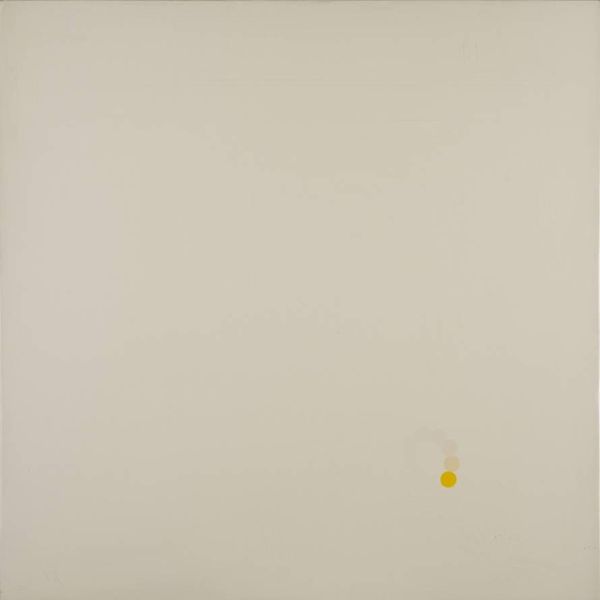
Copyright: Warren Rohrer,Fair Use
Editor: Warren Rohrer’s "White Wheat," from 1973, uses acrylic and watercolor to create a canvas of soft, horizontal lines. The delicate yellows and creams evoke a sense of quiet and order. What can you tell me about this piece? Curator: Rohrer’s work, particularly “White Wheat,” speaks to a specific moment in art history—a post-minimalist exploration of process and material that we can view through a contemporary lens. These quiet, subtle color-field paintings are often read as purely formal exercises, but what if we consider the cultural landscape in which they emerged? What do you think "White Wheat" could be referencing beyond the monochrome and geometric visual aspects? Editor: Hmm, I hadn’t really considered the social context. Maybe the title gives a clue? It was created during a period of considerable social and political upheaval. Curator: Precisely! The artist grew up on a farm in Pennsylvania, the setting for this painting. Perhaps it embodies the labor and sustenance intertwined with agriculture. Rohrer subverts traditional notions of pastoral landscapes by embracing abstraction. By deconstructing the rural landscape, he presents it as an aesthetic experience deeply intertwined with the artist's own history. Editor: That’s a fascinating way to see it! It challenges the typical art historical narrative. Curator: Absolutely. Thinking about Rohrer’s process as an active engagement with his history allows us to unearth layers of meaning within what initially appears to be a purely formalist composition. Editor: It’s really shifted my perspective, making me consider how artists engage with their socio-political background. Curator: Exactly, this approach reveals a whole other stratum for analysis.
Comments
No comments
Be the first to comment and join the conversation on the ultimate creative platform.


